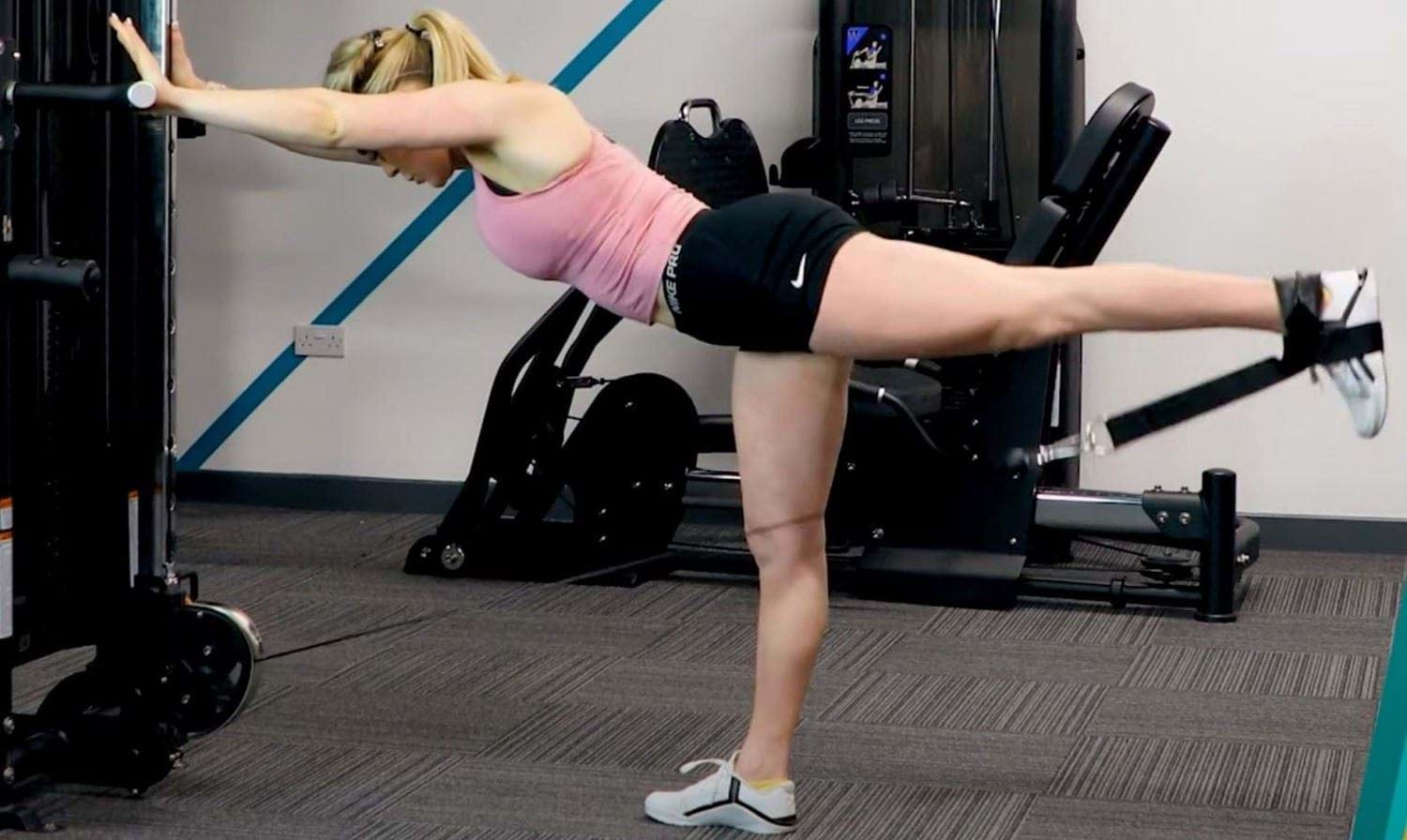Glute Kickback Variations
What is a glute kickback?

The glute kickback is an isolation exercise which works all three gluteal muscles (gluteus maximus, gluteus medius, and gluteus minimus). It also helps to strengthen your hamstrings, calves, and core, as these muscles help to stabilise the movement. Kickbacks can be performed on all fours, or standing. Donkey kicks are a slight variation of the glute kickback, but the terms are often used interchangeably. We've shared how to do donkey kicks and glute kickbacks below!
Having strong glutes helps to protect the lower back, hamstrings, and knees, and stabilise the pelvis. While exercises like squats and deadlifts do work the glutes to some degree, glute exercises are needed if you want to build strength and size.
Check out our other glute exercises: Hip thrusts, Glute bridges, Step ups
COMMONLY ASKED QUESTIONS ABOUT GLUTE EXERCISES
Glute kickbacks are great for building strength and size of the glutes. They work all three gluteal muscles which helps to deliver all round strength, and build a fuller, more toned bum.
Glute kickbacks and donkey kicks are slight variations of each other. In a donkey kick, the knee is bent at a 90 degree angle. In a glute kickback, the knee is extended. Both exercises work the same muscles but from a slightly different angle, so you can choose your favourite or do both.
Donkey kicks help to strengthen and grow your glutes, which over time can lead to a fuller, bigger bum. Building visible muscle gains can be a slow process, and you'll need to make sure you are progressively overloading any glute exercises. We also recommend doing multiple glute exercises each week (such as hip thrusts), not just kickbacks.
Donkey kicks isolate the glutes more effectively than squats, which makes them a great alternative if your goal is to build your glutes. If your goal is to build lower body strength and size, you'll benefit from including both in your training.
Glute kickback tips
- Focusing on form will help to get the most out of kickbacks. Use the glutes to drive the movement, and make sure to squeeze the glutes at the top of the kickback.
- Make sure you are using your full range of motion. Aim to kickback your leg as far as you comfortably can, rather than stopping when it starts to get challenging.
- Perform kickbacks later in your workout, after compound exercises like squats and deadlifts.
Glute Kickback Variations

Cable kickbacks are a great way to isolate and strengthen the glutes as part of your gym workout.

Donkey kicks can be performed with or without resistance bands, ideal for strengthening the glutes at home or as part of a warm up.

Quadruped glute kickbacks are more challenging than donkey kicks while still allowing the glutes to be worked without any equipment.
If you’re not sure if any of the above exercises are suitable for you, please consult your doctor before you start it. Need guidance on how to perform the exercise? Ask a personal trainer at your gym.